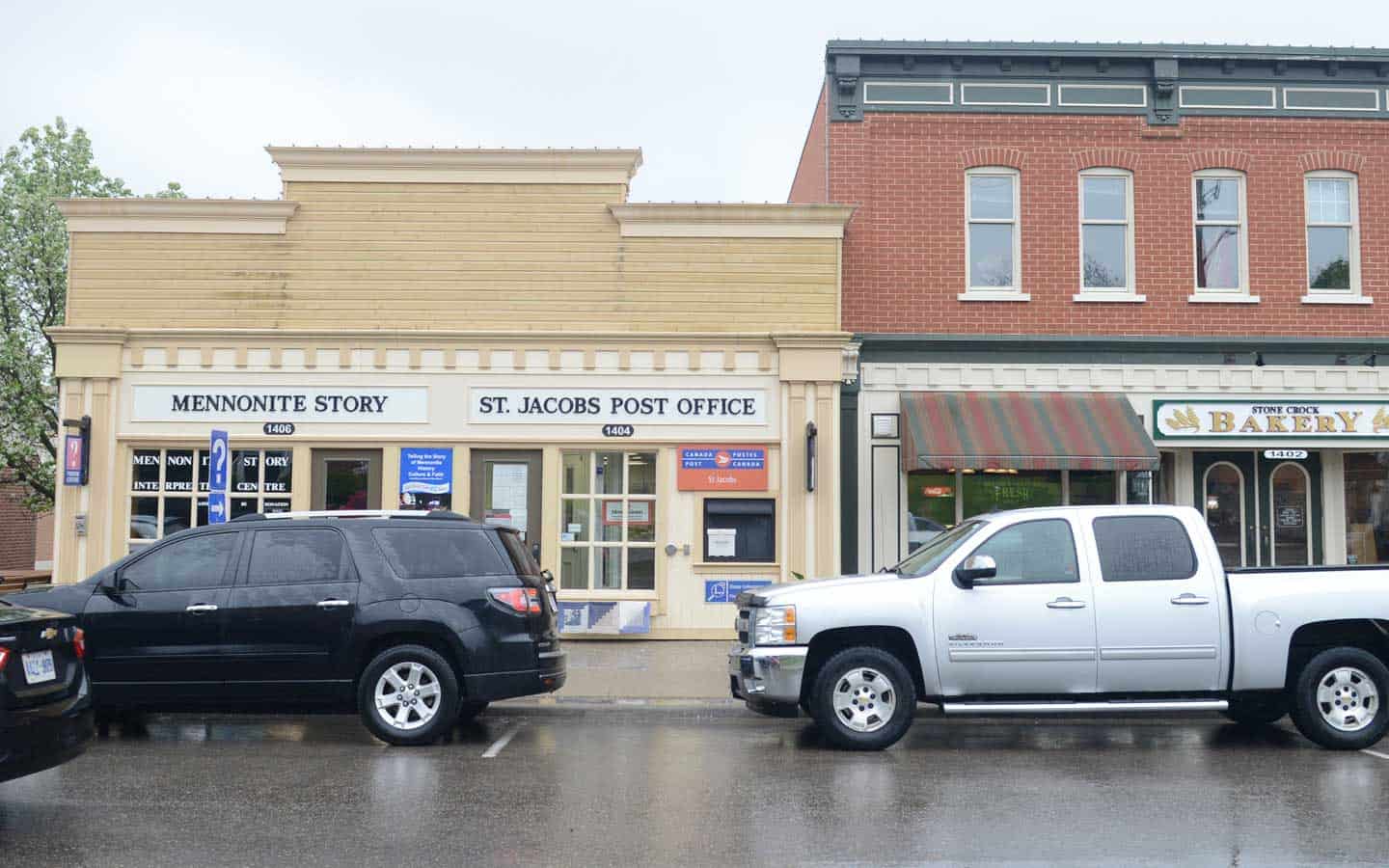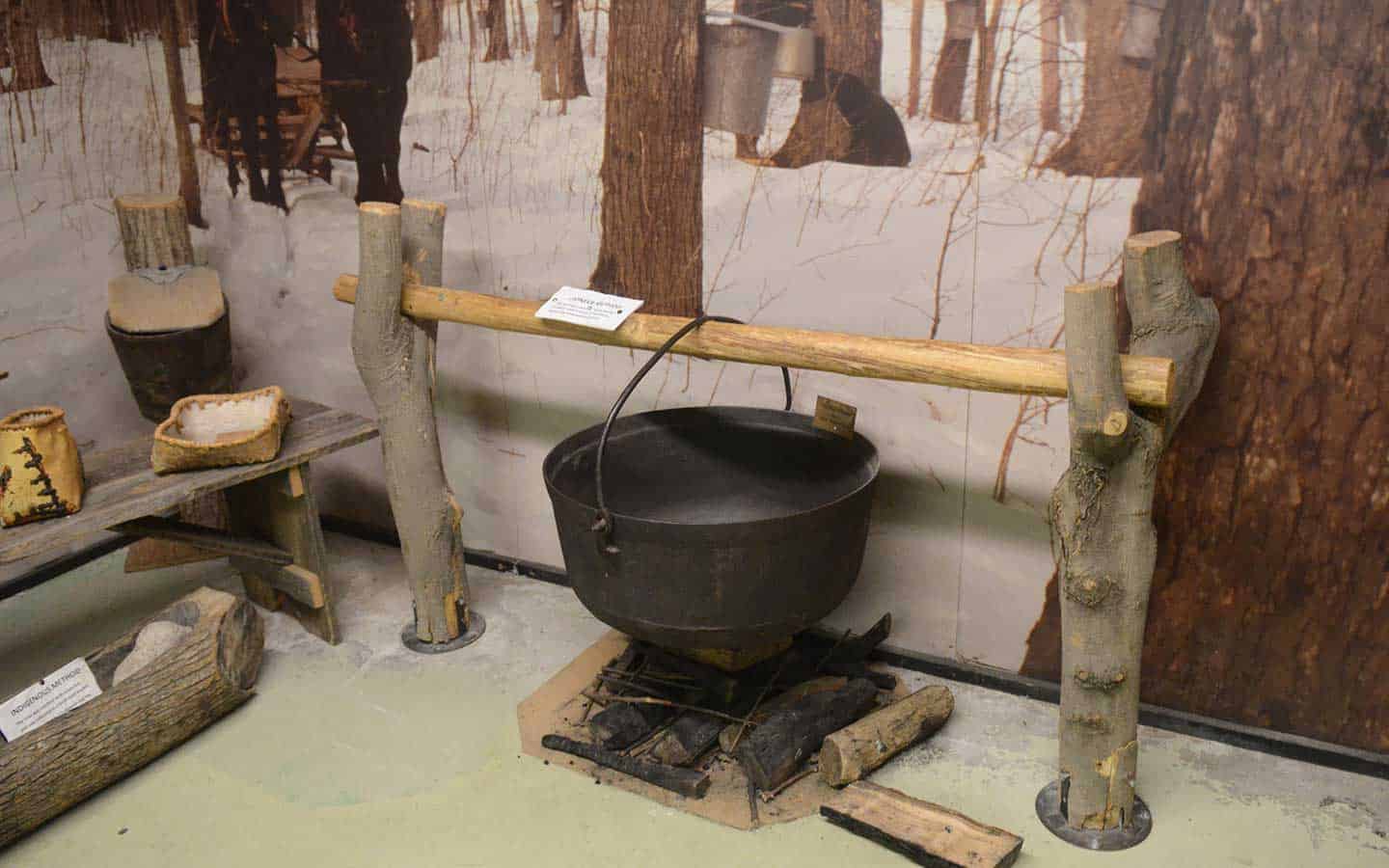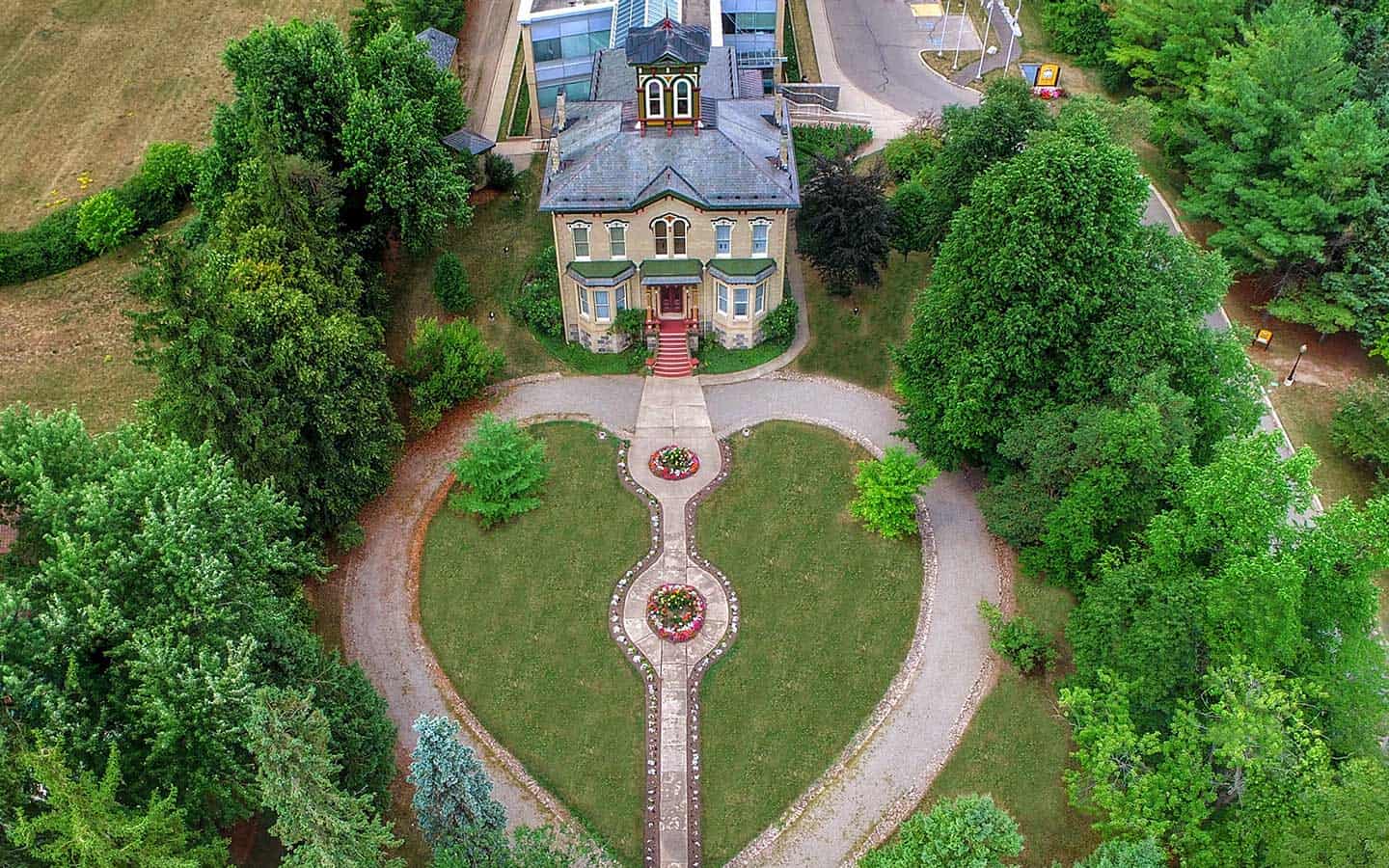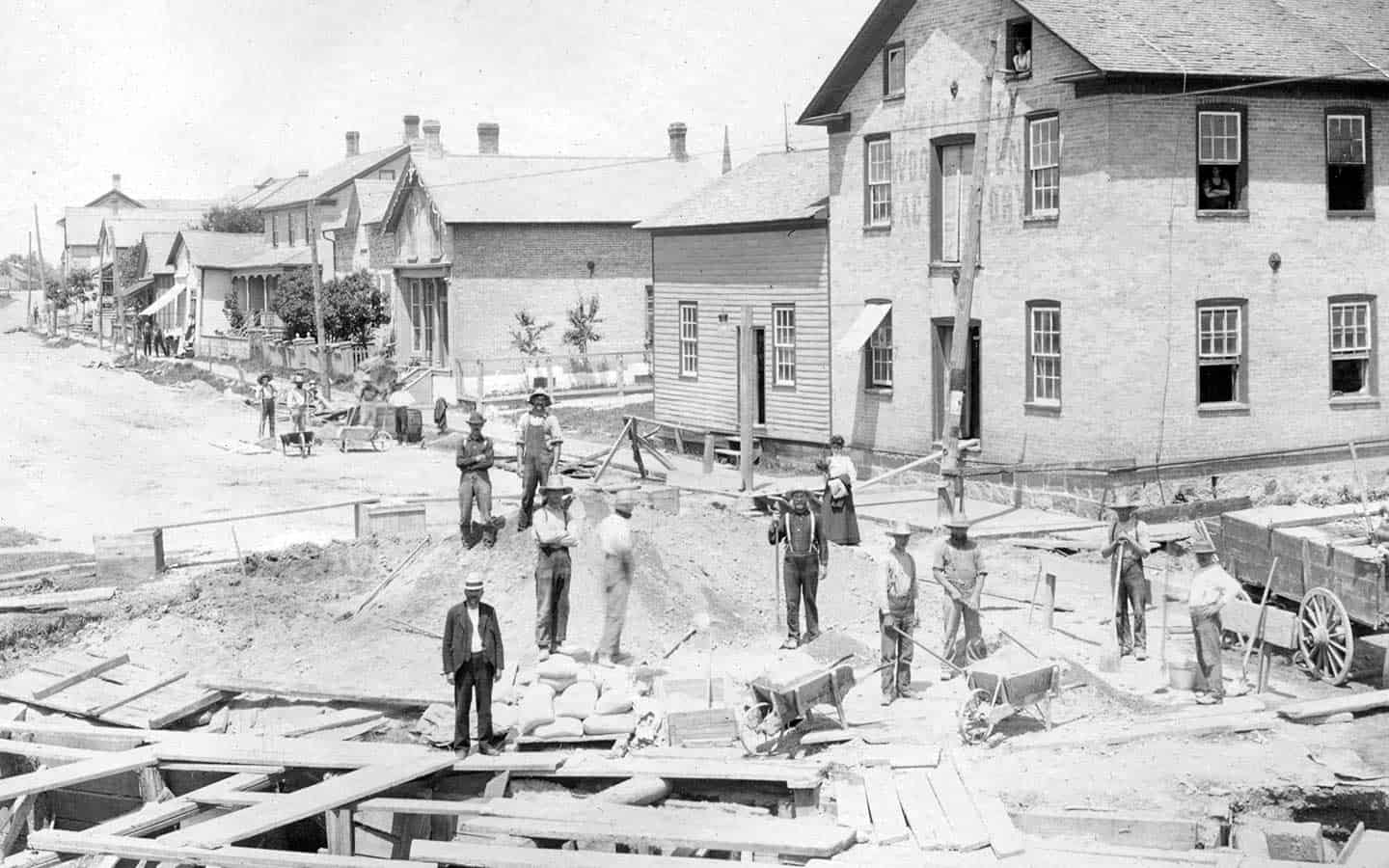May being Museum Month and the summer tourism season on the horizon, it’s a good time to take a look at some of the offerings in the region. Here’s an overview of some of the stops you might consider, whether you’re playing host to visitors or simply looking to explore a facet or two of the area you may not be familiar with.
Woolwich Mennonite Story

It’s a culture and a community deeply embedded in the roots of the Waterloo Region, and yet their story is wide and varied. Telling the tale of this diverse group of people at home and abroad is the Mennonite Story museum in St. Jacobs, which this year celebrates its 40th anniversary.
Founded in 1979 by the industrious Shantz family, the museum started as a public outreach of sorts by the local Mennonite population, looking for a way to satisfy the public’s natural, if at time intrusive, curiosity with Mennonite culture.
“The main interest and the beginning of it was at the request of the horse-and-buggy people,” says museum manager Del Gingrich. “Because they had people parking outside their churches on Sunday mornings taking pictures and they’d get on buggies and take pictures. And so they wondered if they could get help in sort of alleviating that intrusion.”
The museum features an impressive collection of books and media, photographs and artifacts dealing with the history of Mennonites, as well as Amish and Anabaptists. “We have a replica cave because the early Anabaptists had to worship in caves otherwise they’d be hunted down and persecuted or put to death.
“Then we have a whole section that’s called Who is my Neighbour and there people learn about Mennonites around the world.”
There are some 36 varieties of Mennonites in the Region of Waterloo alone, but various branches and communities exist the world over. Though far smaller in number than many Christian denominations, the Mennonite people have earned a glowing reputation through the works of the likes of the Mennonite Central Committee (MCC) and the Mennonite Economic Development Associates (MEDA).
The Maple Syrup Museum

Considering Woolwich is home to the world’s largest single-day maple syrup festival, it would be a crying shame to miss out on this local resource. Another attraction of the St. Jacobs core, the Maple Syrup Museum is the perfect primer for those hoping to learn the history of the sweet, sugary treat, for which the township is associated.
From the historical practices of the Native Americans to the later settlers and modern industry, the museum tells the story of the maple harvest through old tools and implements, video and photography. At the centre of the museum is also an impressively detailed model of the village, complete with a moving train.
The museum is just one of the many ways maple syrup producers have championed the local industry, and for years has been manned by the veteran producer Albert Martin. A local celebrity amongst maple producers, Martin and his wife Ruby were immortalized by the Waterloo-Wellington chapter of the Ontario Maple Syrup Producers Association with the Albert and Ruby Martin Award, which is given out to local members each year.
Wilmot Castle Kilbride National Historic Site

Sporting the beautiful, 19th century Italianate architecture and Victorian sensibilities, Castle Kilbride is an iconic addition to the region’s pantheon of rural museum attractions. Centered at the heart of the Township of Wilmot, this palatial structure was built in 1877 by James Livingston, the “Flax and Linseed Oil King of Canada.”
The historic Victorian home was sold by the family in the late 1980s, and purchased soon after by the Township of Wilmot in 1993 and converted into the museum it is today. A new photographic gallery entitled “Making of the Museum” recounts the local effort to save the heritage site, in honour of the museum’s 25th anniversary.
During the summer months, the pristine grounds of Castle Kilbride become host to a variety of outdoor events, including the Summer Castle Camp (July 22-26) and several concerts running June 13 until August 29.
Inside, the castle is now home to a variety of artifacts and collections for those eager to learn of the township’s history, as well as an extensive archive for researchers and historians. The building itself is part of the attraction, as the walls and ceilings of Castle Kilbride are adorned with murals painted in the Trompe l’oeil technique.
“If you want to step back in time and experience opulence of a bygone era, Castle Kilbride is it!” says Tracy Loch, curator and director of Castle Kilbride National Historic Site.
Kitchener- Waterloo Art Gallery (KWAG)
Beginning with humble origins out of a bicycle shed behind the Kitchener Collegiate Institute in 1956, this gallery was created with the goal of giving local artists a space to showcase their creations. The Kitchener-Waterloo Art Gallery soon found more fitting lodgings, and in 1980 made a final transition to its current location in a custom-built building that’s part of the complext housing the Centre In The Square.
The art gallery sees some 23,000 visitors continue to take in the modern and contemporary artwork which forms its raison d’etre. The gallery is typically free to attend, and receives support from the cities, Ontario Arts Council and Canada Arts Council. About 50 per cent of its support comes from government support, with the remainder raised through donations and fundraising.
“Over the past 60-plus years, KWAG has built an impressive permanent collection of over 4,200 works of modern and contemporary, art and become widely respected across Canada for the high calibre of our exhibitions,” says Stephanie Vegh, manager of media and communications for the gallery.
“We have mounted groundbreaking exhibitions featuring artists such as Edward Burtynsky and Kent Monkman, and received multiple awards for our work. Earlier this month KWAG completed a lobby renovation that has improved accessibility for visitors and created a brighter welcome for our guests at Centre In The Square.”
The KWAG typically features a rotating gallery with about 10 to 12 exhibitions a year. Upcoming exhibitions include the likes of Jenn E. Norton’s Slipstream, an immersive digital video installation inspired by art nouveau dance; and in the gardens outside, a re-planting of the late Mi’kmaq artist Mike MacDonald’s Medicine and Butterfly garden.
The gallery is typically free to attend, and boasts guided tours, children’s camps, hands-on art activities and more.
Cambridge Fashion History Museum
Many would think of fashion as a frivolous thing, and frills there certainly may be. But this young museum in Cambridge says there’s a lot to be learned about people by what they wear.
“Well fashion is surprisingly more complex than you might think. It has had a bit off a bum rap over the past little while. It’s sort of considered frivolous. Oh it’s just clothes. Everyone wears clothes, so what does that matter?” says museum curator and founder Jonathan Walford.
“Well actually, everyone wears clothes,” he repeats with emphasis. “So it’s up there with food and shelter as the most important things in life. The basics. And we have done absolutely everything from big to small, to tall to short, to try and make ourselves beautiful, and that idea of beauty changes.”
Boasting an immense and eclectic collection of some 12,000 pieces which Walford steadily curated over his life, the museum shines the spotlight on histories and cultures of the world.
Exhibitions covering everything from the practical garments worn during the Second World War, to a deep-dive into the Americas circa 1980, to the works of Alexander McQueen. The pieces range from the young to the old, to the literally ancient: the museum’s oldest piece, ancient Egyptian mummy wrappings, dates 3,500 years ago.
The Fashion Museum features one main exhibit, and runs smaller exhibitions throughout the year. “This year, the exhibition is Made in France, so we’ve gone through and pulled all our French couture and we’re doing an exhibition about French couture from 1870’s to the 1960’s,” says Walford.
Another exhibition, beginning July 3, will feature the fun and flamboyant hats created by designer Bes Ben: The Mad Hatter of Chicago. Outside of the typical exhibitions, the gallery also hosts a range of activities and events, including the popular bonnet-making classes, 1920’s-styled tambour beadwork classes, tea parties, children’s activities and more.
Wellesley – The Historical Room

Up the creaky steps of the old Victorian-era school at the site of the current Wellesley village library, is a small treasure trove of local history. Papers, maps, photographs and artifacts deep from the township’s past are carefully arranged in the small space, appropriately titled the Historical Room.
The exhibit is easily dwarfed in size by many of the other exhibits highlighted in this list. And yet none would offer visitors a more authentically local look at the township and its history. And that’s just what lies on the surface.
Run by the Wellesley Township Heritage and Historical Society (WTHHS), the Historical Room features a mixture of permanent exhibits detailing local history, including of the schoolhouse building itself, while new exhibits are periodically added.
“We are currently featuring images taken by the recent Waterloo Region Hall of Fame inductee, photographer Charles F. Ottman, Jr.,” says Nancy Maitland, curator of the WTHHS . “He was active in Wellesley from 1902 to 1906, and left a legacy of images of the village during the time period.”
During his time, Ottman captured images of life in Wellesley village at the turn of the century, and astute observers will notice many familiar landmarks still present in the village today. “Also featured is biographical information of M. P. Empey, a prominent former resident of Hawkesville,” adds Maitland.
The Historical Room is just one more way the Historical Society has preserved and added to the township’s understanding of its past, though it is by no means the only one. The WTHHS has collected and digitized reams of pages, including old newspapers, municipal government records, village police records and more, and has made these extensive records available on their website, www.wellesleyhistory.org.
With an extensive collection of records at its disposal, the WTHHS offers help to others hoping to dig into the township’s past, and encourage people to come by with their research requests. The society also supports a strong educational role for youth in the community, and this fall will be running history-themed competitions for youth – and there’s a money prize attached for winners.









